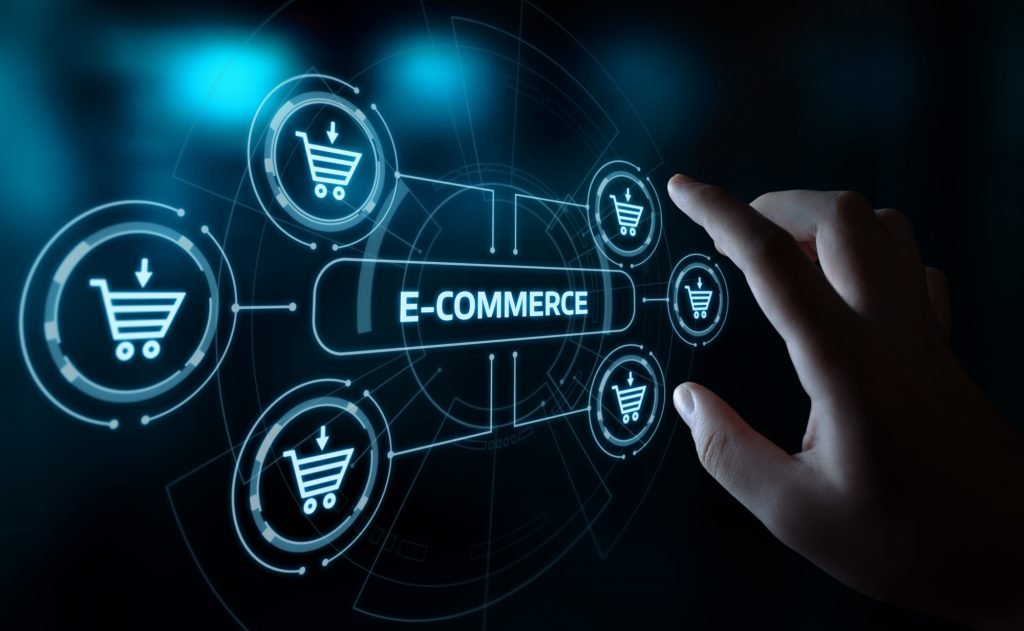They say if you are not online, you don’t exist. Retailers should interpret this as: if you don’t have an eCommerce website, your business is off the radar for a helluva lot of customers.
Last quarter, Walmart’s online sales increased by 97%. Amazon’s Q2 sales & profit growth was 40%. But it’s not just the big guys, benefiting from consumers’ spiked appetite for online shopping. Smaller retailers such as Howards Storage World, B-Wear Sportswear, and Plain Jane among others are seeing double and (even triple!) digit growth in eCommerce revenues, compared to the year before.
What else do these three companies have in common? Their fresh eCommerce website designs are spot on and optimised for customer conversion. And here’s how you too, can join the growing array of retailers that consistently beat their yearly eCommerce targets.
The best eCommerce Website Agency
We specialise in using great eCommerce platforms and features to help grow your business online. Using a combination of UI, design and development, our aim is to maximise profits.
- Custom eCommerce websites
- Mobile eCommerce ready
- Search engine optimised websites
- Social media integration
Mobile Ecommerce Website
With over a billion sales made via mobile devices, our eCommerce websites are designed to be responsive for a great customer experience. An eCommerce website agency provides you with an extensive set of marketing & SEO tools to engage with your customers, get found on search engines, social media, and increase product sales.
- Mobile commerce secure checkout
- Mobile phone, tablet and laptop ready
Design Differences Between B2C and B2B Ecommerce Websites
To design a high-performing website, you need to understand who your target audience is and what’s the best way to reach it. Both Business-to-Business (B2B) and Business-to-Consumer (B2C) eCommerce websites have the same agenda — make a sale. But the means towards that goal are somewhat different.
For B2C companies brand awareness is the #1 priority. A recognizable brand (think about this when choosing your domain name) with a strong online presence = a higher share of the total addressable market.
For B2B companies the top priority is lead generation. With a niche market and longer purchase cycles, B2B brands need to keep a steady pipeline of warm leads.
Let’s take a look at what this means design-wise.
eCommerce Design Customer intent
Both Business-to-Business and Business-to-Consumer purchases are sparked by a need. But the underlying motivations behind those needs are different.
B2B customer intent is driven by business priorities and backed by a group of other people (stakeholders, teams, company’s customers, end-users). With many people to please, the product research timelines are longer, and the list of requirements for evaluating products is more detailed. That’s why B2B eCommerce websites dwell more on converting top-of-the-funnel (TOFU) and middle-of-the-funnel (MOFU) visitors to prospects and then turning them into customers using a mix of online (email marketing, eBooks, social media, online demos) and offline sales (phone consultations, in-person demos, etc) strategies.
B2C shoppers act on an immediate need. While most shop around too, comparing product specs and prices, their average time spent at every stage of the sales life cycle is shorter. Unlike B2B buyers who allocate more time to data-based product evaluation and consideration, B2C folks often act on impulse and thus are more receptive to various cognitive triggers, activated by our bias.
Advantages of Using SEO2 for Designing an eCommerce website
Pretty or functional eCommerce website? With us, you get both. Think of eCommerce website design as building a house. First, you have to build strong mortar and outer walls. SEO2 Agency provides you with the technical ‘bricks’ to place at the core of your online operations — no-code page builders, secure check-out, SEO-friendly codebase, and more. You can mix and match different ‘bricks’ to assemble a tiny house or a 6-bedroom Victorian mansion.
We also don’t limit you when it comes to the front or interior design. You can give your website a fully custom on-brand look without skimming on SEO, usability, or security. At the same time, you can customise your back-end to match your operations by pairing the in-built core commerce with external integrations.
Homepage on an eCommerce website
A homepage is the first touchpoint between you and a potential customer, you can think of it as a digital storefront for your online business. With roughly 3 seconds to make a good impression, you need to be strategic with your design choices on your homepage.
High-performing eCommerce homepages share the following elements:
- A clear set of product categories, either in the header or sidebar section.
- Hero image (or image slider) featuring the main product or current offers.
- Curated presentation of recommended products, trending items, or product categories.
- Enter and exit pop-up or sticky offers for retention.
The structure above is not cut and dry, though. The look of your homepage will be determined by two factors — your industry and your customers’ preferences.
The Category pages on an eCommerce website
Category pages help organise all your products and facilitate discovery. Digitally distracted customers want instant information, especially when they are on mobile devices. So you need to serve them with quick access to the products they crave. Apart from being crucial for user experience, category pages also need to be optimised for SEO (search engine optimization). Incorrect parent-child relationships, can result in duplicate content and undercut your rankings in search results. Thus ensure that each category page:
- Has a descriptive, SEO-friendly URL.
- Features unique texts for category descriptions.
- Fits logically into your overall information architecture.
- Features additional filters for sorting product suggestions.
Product pages for the eCommerce websites
Product page design is exceptionally important for eCommerce. Whether you sell t-shirts or tires, if your listings look meh, your traffic and conversion numbers will never go up. At the very least, your product page has to feature:
- High-quality product photo(s).
- Product specs: name, color, sizes, prices, key features.
- Buy and save for later buttons.
- Detailed product description.
- Social proof/customer reviews.
- Related products (upsells and cross-sells).
Then you can spice it up with some extra features — countdown timers, video or AR demos, check-in-store option, back-in-stoke alerts, and more! In our previous post, we talked a heap more about creating effective product pages.


